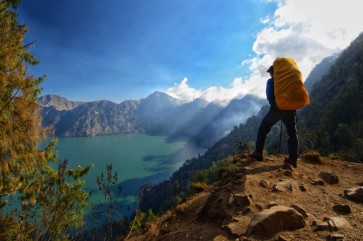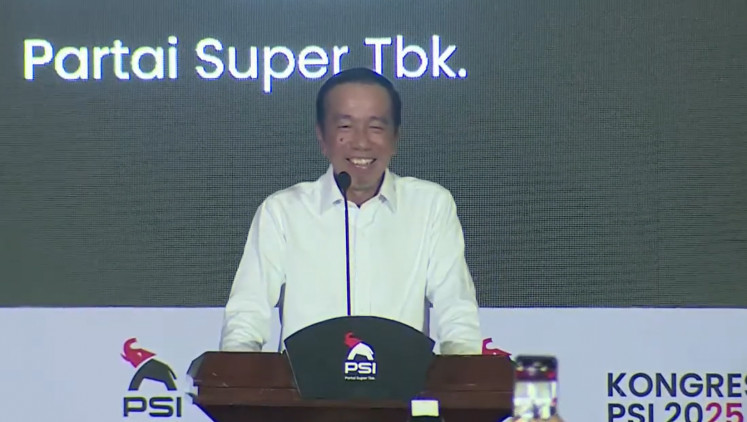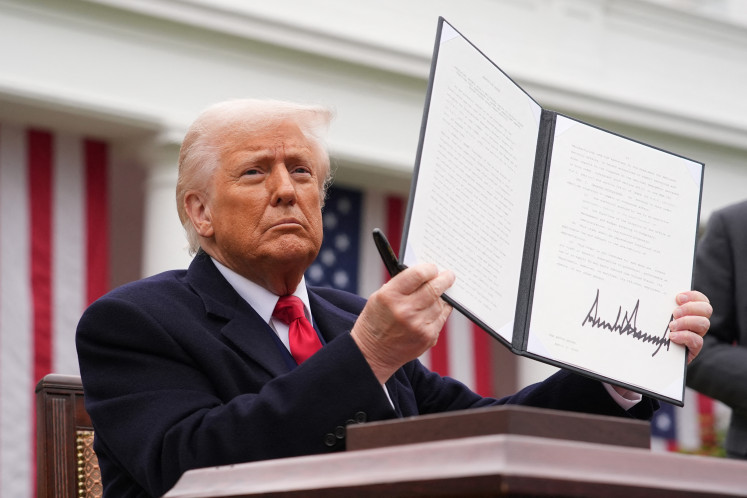Popular Reads
Top Results
Can't find what you're looking for?
View all search resultsPopular Reads
Top Results
Can't find what you're looking for?
View all search resultsGovernment steps up gas conversion program
The government is collaborating with the Indonesian Automotive Manufacturers Association (Gaikindo) in order to accelerate the gas conversion program in a campaign to reduce the country’s dependence on fuel, according to a Cabinet minister
Change text size
Gift Premium Articles
to Anyone
T
he government is collaborating with the Indonesian Automotive Manufacturers Association (Gaikindo) in order to accelerate the gas conversion program in a campaign to reduce the country’s dependence on fuel, according to a Cabinet minister.
“We hope that as of 2014, each vehicle released from showrooms will already be equipped with a gas converter,” Energy and Mineral Resources Minister Jero Wacik said in Bandung over the weekend.
“We have prepared 250,000 converter kits, but only 3,000 have so far been installed. This figure must be improved upon,” he said after delivering a lecture on “Energy Resilience” at the Bandung Institute of Technology (ITB).
The program, he said, will require the establishment of more gas stations offering easy gas-filling facilities to public transportation vehicles and taxis in particular. He said Indonesia should be able to surpass Malaysia’s gas conversion program, which “has managed to equip only 41,000 vehicles with gas converters during its eight-year program.”
PT Pindad director Adik Avianto said the company had been able to make the converter tanks although it had yet to produce them en masse, pending the government standardizing the specifications.
Jero also revealed the government’s plan to build 28 geothermal power plants in order to phase out the subsidy on electricity, which was said to amount to over Rp 20 trillion.
He said the new geothermal plants would be able to produce a total of 7,000 megawatts of electricity.
“We will also build more hydropower plants in Sumatra and Kalimantan,” he said.
The operation of the new plants is expected to reduce the operational costs of producing electricity beginning in 2014.
With electricity costing between 36 and 40 US cents per kilowatt hour (kWh), the government, according to Jero, will have to spend some Rp 90 trillion on electricity this year. “That’s costly,” he said.
The use of geothermal energy would reduce costs to between 7 and 10 US cents per kWh, he said. “Coal will bring down costs even further, to about 6 cents per kWh,” he said.
When the government could supply 40 million cubic feet of electricity to PLN, the company would save operational costs of around Rp 3 trillion per year, he said.
“If the Rp 90 trillion is allocated toward coal, gas or geothermal it will have a significant impact. We can expect a smaller amount of subsidy apportioned from the national budget for electricity,” he said.
However, he said he could not yet put a figure on the amount of funds they could save from the use of alternative energy.
The government is expected to increase the price of subsidized fuel in April, pending endorsement by the House of Representatives (DPR).
The price increase, which is expected to be Rp 1,500, will raise the price of fuel to Rp 6,000 per liter.
“We hope the political situation in the Middle East becomes more conducive so that [the price of] crude oil goes down,” Jero said. He said, given the international price of crude oil at US$122 per barrel, the policy to increase the price of subsidized fuel to Rp 6,000 per liter was reasonable; especially in light of the experience in 2008, when subsidized fuel was set at Rp 6,000 per liter while crude oil hovered at US$ 109 per barrel.
“If crude oil remains at $122 per barrel and we increase our price to Rp 6,000 per liter, it is still acceptable,” he said.










